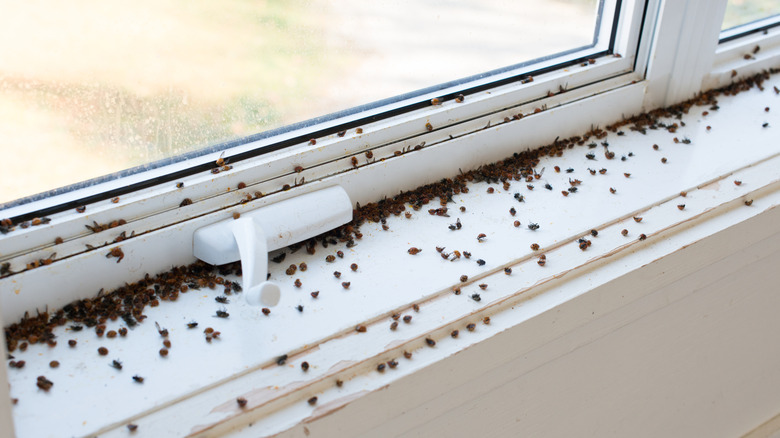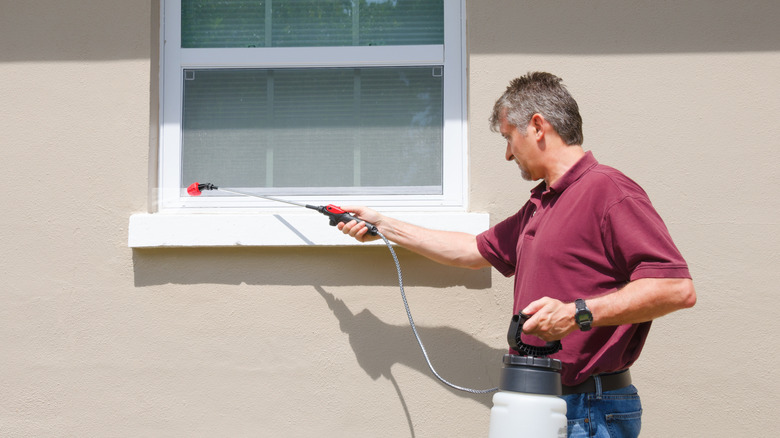Should You Be Spraying For Bugs In The Fall?
When the trees trade their green for golden, something far less charming than pumpkin spice and flannel makes its presence known. As the temperature drops, numerous bugs start searching for a place to hunker down for winter, not on Zillow, but the very home you treasure most. Cluster flies, for example, can't resist slipping into attics and the spaces between your walls to nap through winter. Then you've got the Western conifer seed bugs that release a nasty odor when disturbed. Asian beetles are another imposter of the insect world that tends to appear in the fall. These bugs cannot handle the cold, so they seek a cozy spot to hibernate. Fortunately for them and unfortunately for you, your home checks every box. It's warm and dry. Plus, it's filled with crumbs they didn't pay for. That's why the simple maintenance task you should do in fall is spraying for bugs. It lets you set boundaries before the unwanted visitors show up.
But avoid spraying outside your home when the temperatures are above 90°F. In early fall, some regions of the U.S. still hit those temperatures. Heat can cause pesticides to evaporate before they do their job. Waiting for slightly cooler days means your treatment is likely to work better and last through the season.
Things to consider when spraying for bugs in the fall
Before you grab the spray and go on a pest-fighting mission, there are a few things you'll want to keep in mind to make your efforts worthwhile. First, always wear protective gear, including long sleeves, gloves, a mask, and safety glasses. Even if you're using a product with low toxicity, do not assume it's entirely safe. The chemicals in these products can irritate your skin and aren't something you want to breathe in. Also, go for a spray that's weather-resistant. That's because fall can be unpredictable. In case it rains shortly after spraying, a non-waterproof formula will wash right off, sending all your effort down the drain.
Further, when you start spraying, always go with the direction of the wind to avoid blowback and make sure the product reaches where it's supposed to. Focus on the problem areas like baseboards, door frames, window sills, and your home's foundation to keep insects out of your house. Spray evenly but avoid soaking the surfaces. Ideally, stick to the amount recommended on the label. Too much product can contaminate soil and water, which may end up harming you and local wildlife. And finally, avoid the mistakes that attract pests to your home. To do that, you need to seal gaps around pipes or vents using expanding foam, and keep up with trimming shrubs and raking so critters have nowhere to hide.

